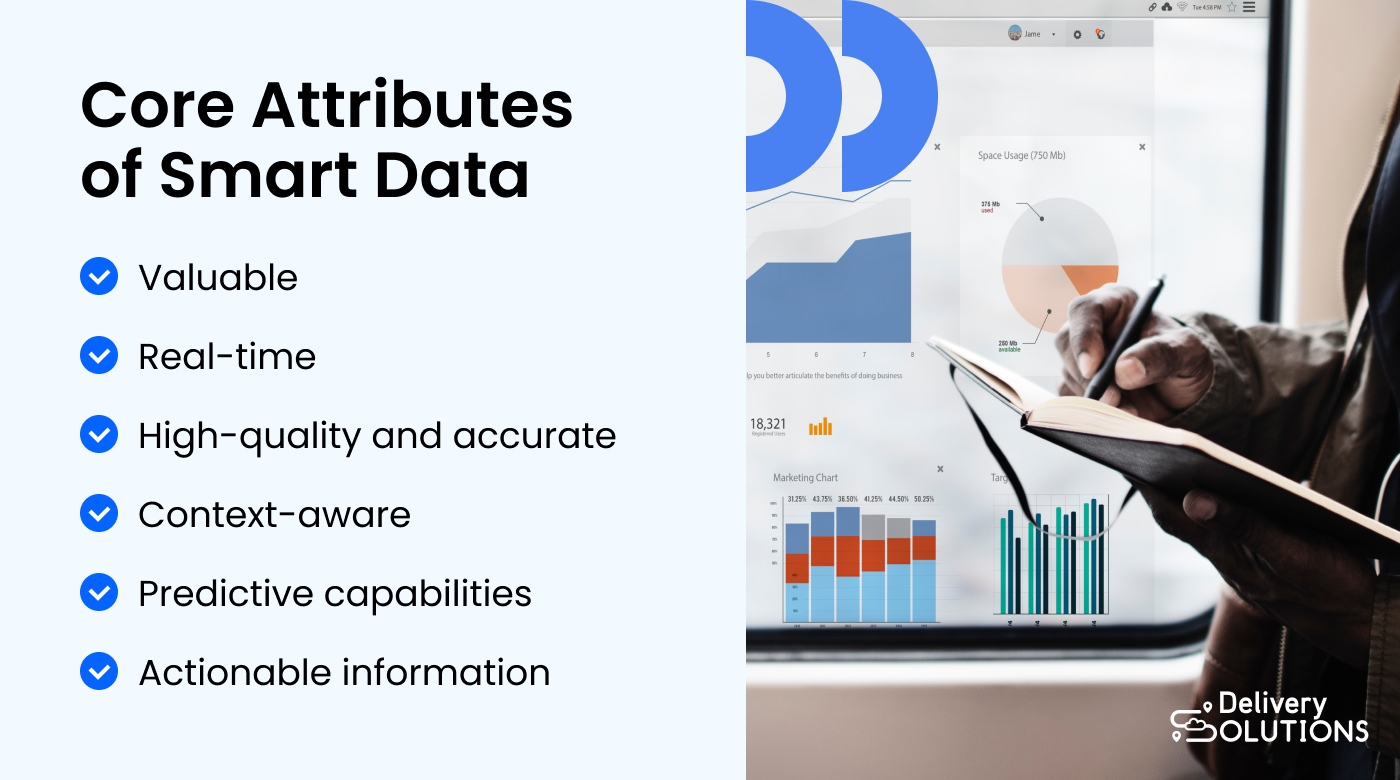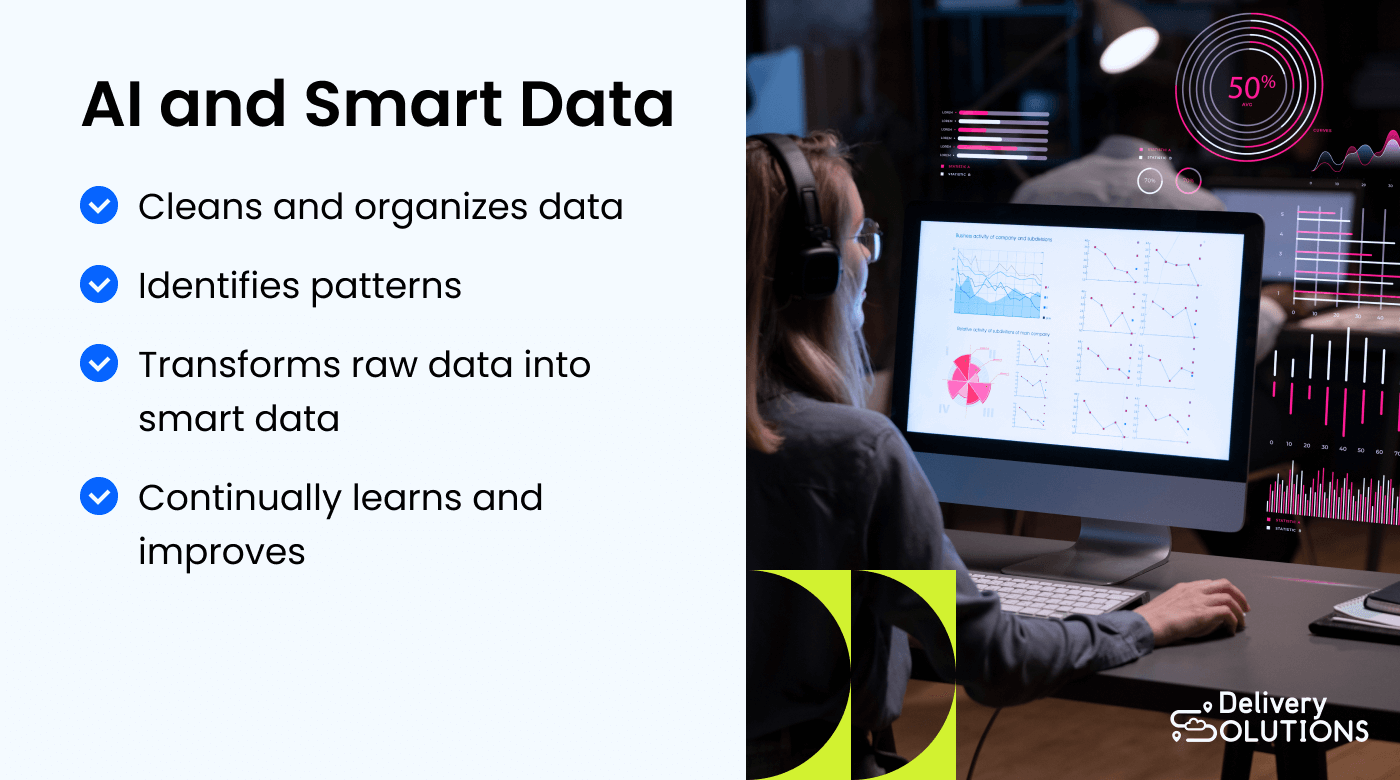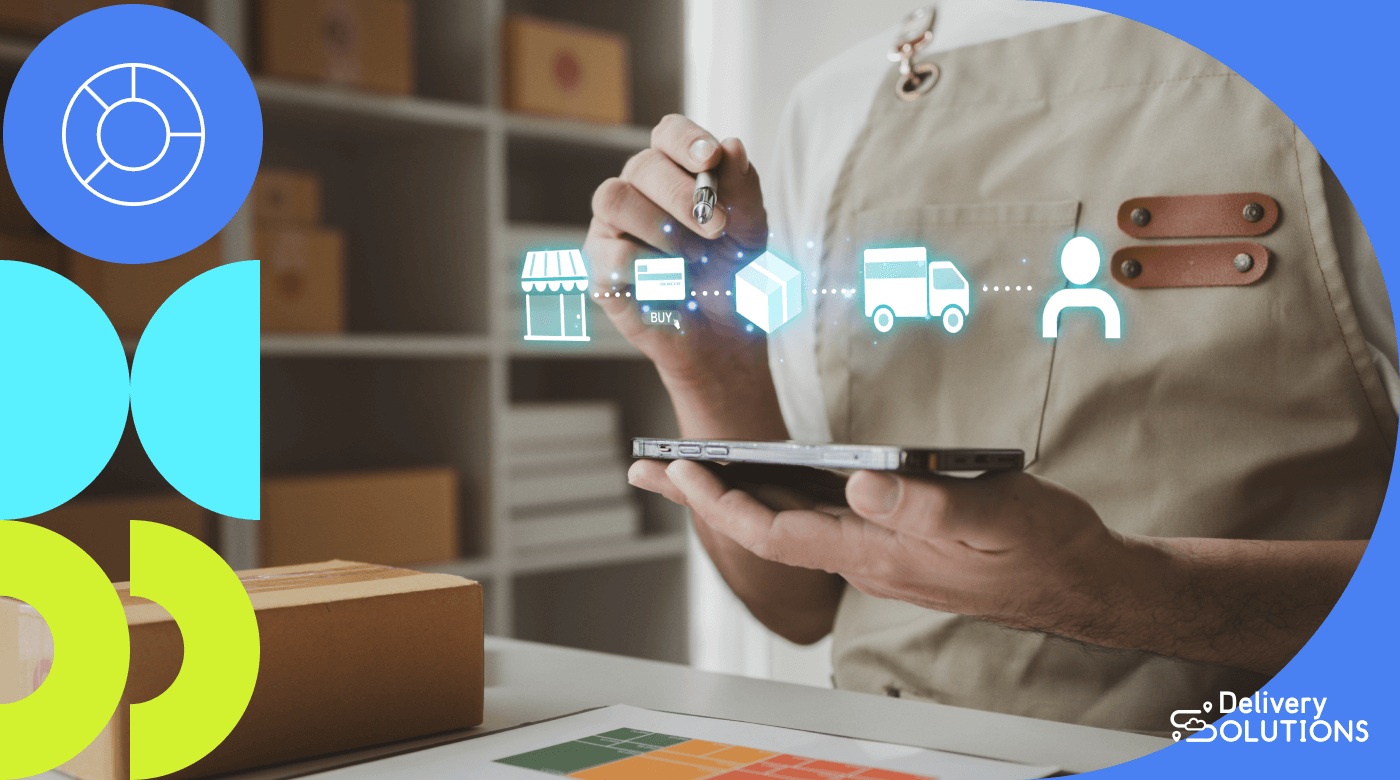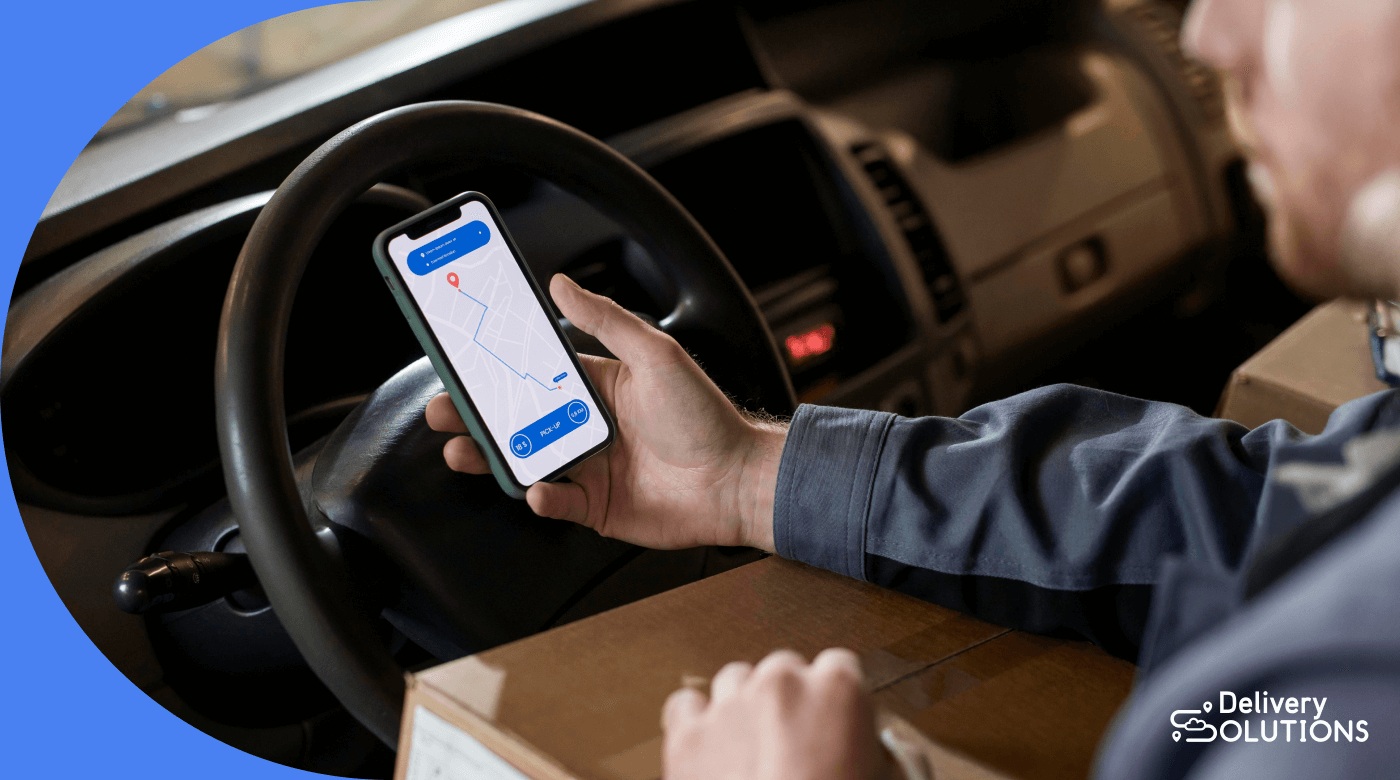In the modern digital economy, businesses collect vast and ever-increasing amounts of data from various sources. But often, that data is wasted because the company doesn’t have the tools or capacity to analyze and interpret it.
Businesses need to extract, organize, and analyze the most relevant, high-quality data from the large quantities they collect to use their data fully. They then need to add context to the data and provide actionable insights for better decision-making. When these criteria are met, the result is smart data.
In this article, we’ll dive deeper into the meaning of smart data, why it’s important, and how it can be applied to improve your customers’ experience and transform the efficiency of your business.
What is smart data?
Businesses universally acknowledged data as a key asset, with nearly 94% planning to ramp up their data investments. However, not all data is useful data. Disorganized data, lacking context, won’t do anything to support your business strategies.
Processing, filtering, and refining smart data gives your business valuable information for more effective decision-making.
A few defining characteristics distinguish it from raw data, including:
Value: Smart data has genuine value. It provides insights that can have a real impact on your business strategies and outcomes.
Real-time processing: Real-time processing means that smart data is always current. It allows your business to respond quickly to dynamic situations and opportunities.
High-quality and accurate data: Smart data is high-quality, accurate, and reliable, so you can trust the insights it provides to inform decision-making and business strategy.
Context-aware data: Because smart data is context-aware, it can give you a more nuanced understanding of circumstances or consumer behaviors. This makes it possible to tailor responses more accurately.
Predictive capabilities: Smart data's predictive capabilities allow you to forecast future trends and behaviors. This provides you with valuable insights for strategic planning and risk management.
Actionable information: The goal of smart data is to provide actionable information. Ultimately, this empowers you to take informed actions that drive the progress and efficiency of your business.

What’s the difference between smart data and big data?
Big data
Big data involves handling extremely large datasets from various sources. These datasets are often unstructured or semi-structured, which, together with their volume and variety, makes them difficult to manage and analyze.
The data typically contains a mix of valuable insights and less relevant information. But without any sort of organization or analysis, it can be too overwhelming in quantity and scope to provide useful insights leading to immediate action. Storing and analyzing such vast amounts of data can also be resource-intensive.
Despite this, many organizations collect as much data as possible, aiming to use it sometime in the future.
Smart data
Smart data is extracted from vast amounts of big data and reorganized into smaller, more relevant datasets. Its more structured and refined form is easier to use and directly useful for decision-making and problem-solving within the organization.
Because it’s been collected and analyzed with a precise purpose in mind, unlike unprocessed big data, smart data provides specific, actionable insights.
This means that smart data can solve problems, make better decisions, inform business strategy, and help achieve business objectives.
The role of AI and ML in smart data
Artificial Intelligence (AI) and machine learning (ML) technologies have dramatically transformed data processing. They’ve made it possible to handle vast amounts of unstructured data and automate its cleaning and organization.
In addition, generative AI can automate tasks, increase efficiency, and reduce human error. So, it’s no surprise that 55% of data leaders said they’re most excited about the possibilities of these technologies.
Now more than ever, AI and machine learning (ML) play key roles in transforming raw data into smart data. AI cleans and organizes the data, turning vast quantities of unstructured information into useful, actionable data.
ML algorithms can detect patterns within large datasets, making predictions more accurate and reliable. ML also has the capacity for continuous learning, which means it can produce more accurate and useful data over time.

What are the benefits of smart data?
Actionable insights: Smart data drills down into precisely what actions are needed. This allows you to plan strategically with much greater accuracy and speed than conventional data collection and analysis methods.
Better decision-making: It provides accurate, data-driven insights, significantly improving your ability to make effective decisions.
Increased efficiency: Focusing only on relevant data helps processes run more smoothly and ensures your resources are used more efficiently.
More Accuracy: Smart data filters out irrelevant information. This makes data more reliable and reduces errors.
Cost Savings: Smarter, data-driven decisions help you cut unnecessary costs and target your spending more effectively.
Risk Reduction: Clear insights into potential risks means you can take action to avoid or mitigate those risks.
Competitive Advantage: The ability to act quickly on opportunities identified through smart data helps you stay ahead of the competition.
The role of smart data in delivery management
Smart data can considerably improve the management of deliveries. It helps your business make well-informed plans, considering delivery times, routes, and customer preferences.
The increased transparency provided by smart data allows the business and your customers to track deliveries in real time, knowing exactly where they are and when they’ll arrive.
Smart data also allows you to quickly adjust to changes in the market. For instance, if there’s a sudden spike in demand or a supply chain hiccup, deliveries can be rerouted or adjusted on the fly.
All these improvements contribute to improved customer satisfaction and a better brand experience. Your customers enjoy a more reliable and efficient service, building trust and loyalty over time.

Estimating delivery times in advance: Smart data allows you to accurately predict when deliveries are expected to arrive, which helps with planning and scheduling.
Sending automated notifications to customers: Customers automatically receive updates on their delivery status, keeping them well-informed throughout the process.
Allocating resources for deliveries: Delivery vehicles and personnel are used effectively by matching the volume and location of deliveries with available resources.
Analyzing how weather affects delivery schedules: Delivery plans can be adjusted based on weather conditions to reduce delays and ensure deliveries arrive on time.
Tracking driver performance: Businesses can identify which drivers perform well and who may need more support or training.
Improving the efficiency of last-mile delivery: Identifying the best routes for the last mile saves time and resources.
Updating package tracking and status: Tracking information allows businesses and customers to have up-to-date information on the whereabouts of their packages.
Forecasting demand for delivery resources: Predicting the demand for future deliveries allows you to plan and allocate your resources more efficiently.
Testing smart data for insights
Some logistics platforms, like Delivery Solutions, use AI and ML to analyze data and spot trends and patterns in operational performance. These technologies automate examining the data, learning from it, and making predictions based on their findings.
This speeds up the data analysis process and improves the accuracy of any insights. As a result, AI and ML significantly improve delivery operations' accuracy and efficiency. Together, they streamline processes, reduce mistakes, and allow fast adaptation to changes in the market.

Smart data testing can improve your delivery services in several key areas. For instance:
Choosing the best carrier: It can analyze the historical performance of delivery service providers to help you choose the best carrier for coverage, ability, availability, and cost.
Improving delivery time predictions: It can analyze historical data, current traffic conditions, and driver performance to estimate more precise delivery time. This not only streamlines operations but also boosts customer satisfaction by providing accurate information regarding the delivery time of their package.
Enhancing customer experience: Smart data can significantly improve the overall customer experience. AI analyzes consumer behavior to understand their needs and preferences. Then, the resulting data can provide the customer with tailored delivery options. Customers always welcome personalized service, increasing their satisfaction and loyalty.
Ongoing testing with smart data allows your business to adapt quickly to new trends, consumer demands, and delivery challenges. By continuously improving and adapting, you ensure your business consistently meets customer expectations in the rapidly changing market.
Reviewing and analyzing smart data
A recent Gartner report found that integrated ecosystems rather than siloed and disconnected components in data and analytics platforms are an emerging trend.
Integrated ecosystems do away with the problems associated with data silos, such as inaccuracy, inefficiency, and the inability to see the full picture. This makes a considerable difference when reviewing and analyzing smart data.
By linking different data segments, businesses get a complete view of the operational landscape, helping them plan better and stay ahead of the competition.
Delivery Solutions is platform with an end-to-end suite of software products under a single ecosystem. Our analytics tools give you a holistic and comprehensive view of all data within your omnichannel ecosystem.
Delivery Solutions platform provides:
- Power BI reports
- Self-healing analytics
- Aggregated data across the entire omnichannel ecosystem
- Data analysis insights into order processing, fulfillment, and delivery routes.
- Advanced algorithms leverage historical data so you can anticipate customer needs and identify trends.
Together, these capabilities can lead to considerable cost and efficiency savings.
For example, Lowes Foods has used Delivery Solution’s built-in analytics to dig into its key performance indicators and significantly improve its delivery operations. By benchmarking the performance of their delivery service providers, they've been able to measure and compare the efficiency and reliability of different services.
It’s also enabled them to identify trends in delivery times, customer satisfaction, and areas needing improvement.
Lowes Foods has been making ongoing improvements and driving operational efficiencies with these insights. In turn, this has reduced costs and improved service speed. And as a result, their customers have enjoyed a more seamless and satisfactory shopping and delivery experience.

Making changes and growing your business
Translating data insights into actionable business strategies is key to growth and advancement. Nearly 60% of company leaders report that their businesses drive innovation using data analytics.
Here are some examples of how smart data can drive innovation and growth in your business:
Personalized services: By leveraging smart data insights, a company might discover that many customers prefer options like same-day delivery, locker click-and-collect, or curbside pickup. By making changes to meet these preferences, the company can increase customer satisfaction, attract a broader base of potential customers, and encourage repeat business.
Identify any need for change: Businesses can pinpoint what changes need to be made by examining data trends and customer feedback. This means you invest resources wisely, minimizing risks and increasing potential returns.
Flexibility and agility: The market is always shifting, so agility and flexibility in making changes are also important. Businesses that regularly review their data and are ready to pivot accordingly can more easily stay ahead of the curve with their strategic approach.
Identify inefficiencies: By analyzing data on order processing, fulfillment, and delivery routes, you can identify bottlenecks, inefficiencies, and areas for improvement. Pinpointing exactly where efficiency savings can be made can significantly cut operational costs.
Identify new opportunities: Insights from smart data can uncover new market opportunities or niches.
Improved ROI: Ultimately, making data-based decisions allows you to use your resources best, boosting your return on investment and setting the stage for steady growth.

Use smart data to revolutionize your delivery services
Smart data holds immense potential to drive business growth. This includes the ability to significantly improve the management of delivery services and increase customer satisfaction.
Delivery Solution’s platform streamlines the smart data analysis process, making it faster, simpler, and more effective. Aggregating data across the entire omnichannel ecosystem provides a comprehensive view that allows you to make better-informed decisions and develop an innovative strategy.
To experience the power of integrated data analytics with Delivery Solutions and take your delivery services to the next level, book a demo today.
Ryan Caldarone
Ryan is a Sr. Digital Marketing Manager with over ten years of experience in B2B eCommerce, specializing in brand storytelling and content. Having contributed to hundreds of creative projects for SMBs and startups across the tech, energy, and fine arts sectors, Ryan brings diverse perspectives.
Topics from this blog: Solutions Innovation Improvement
.png)